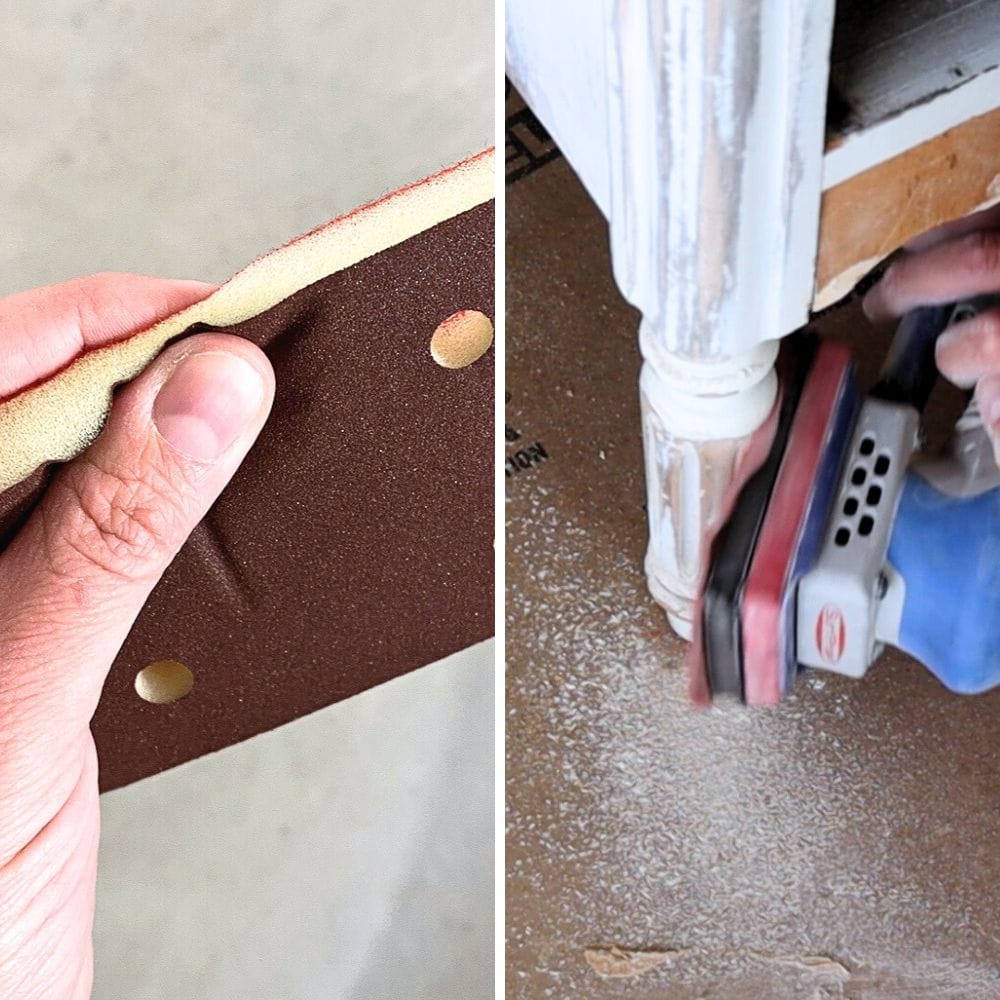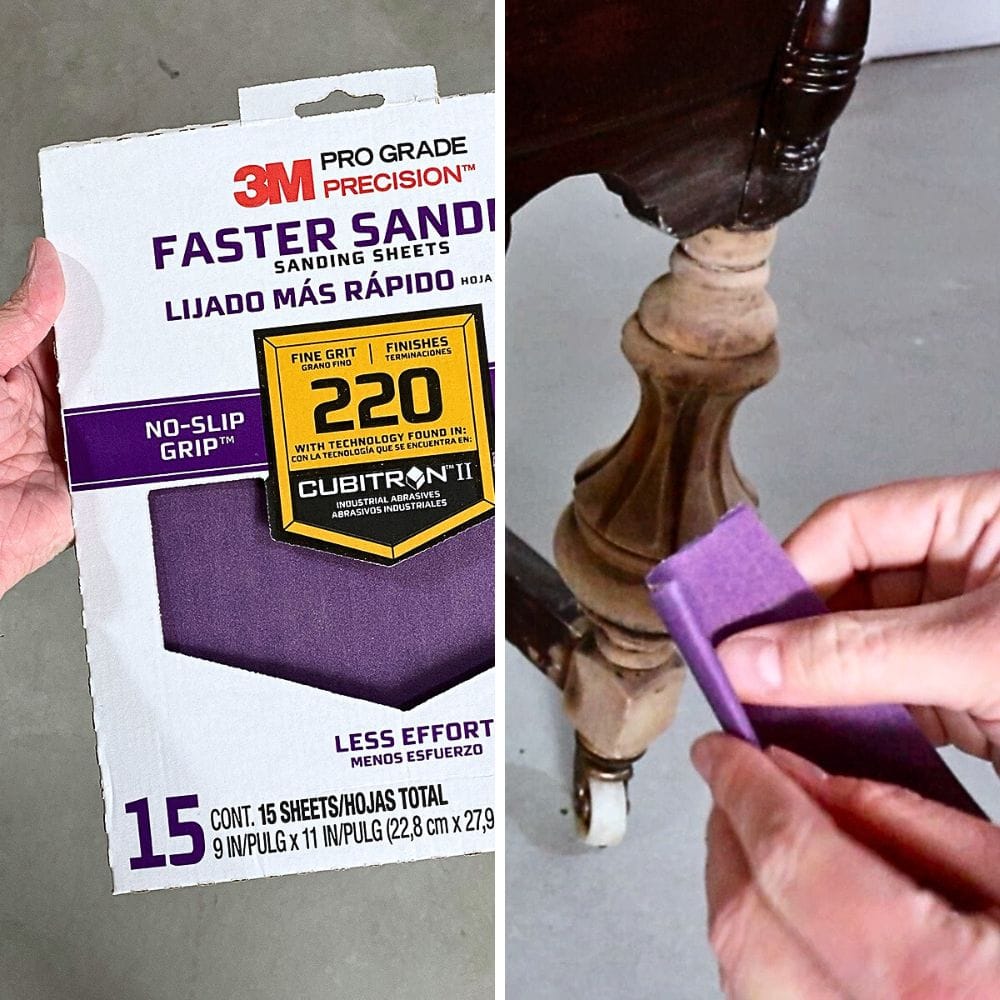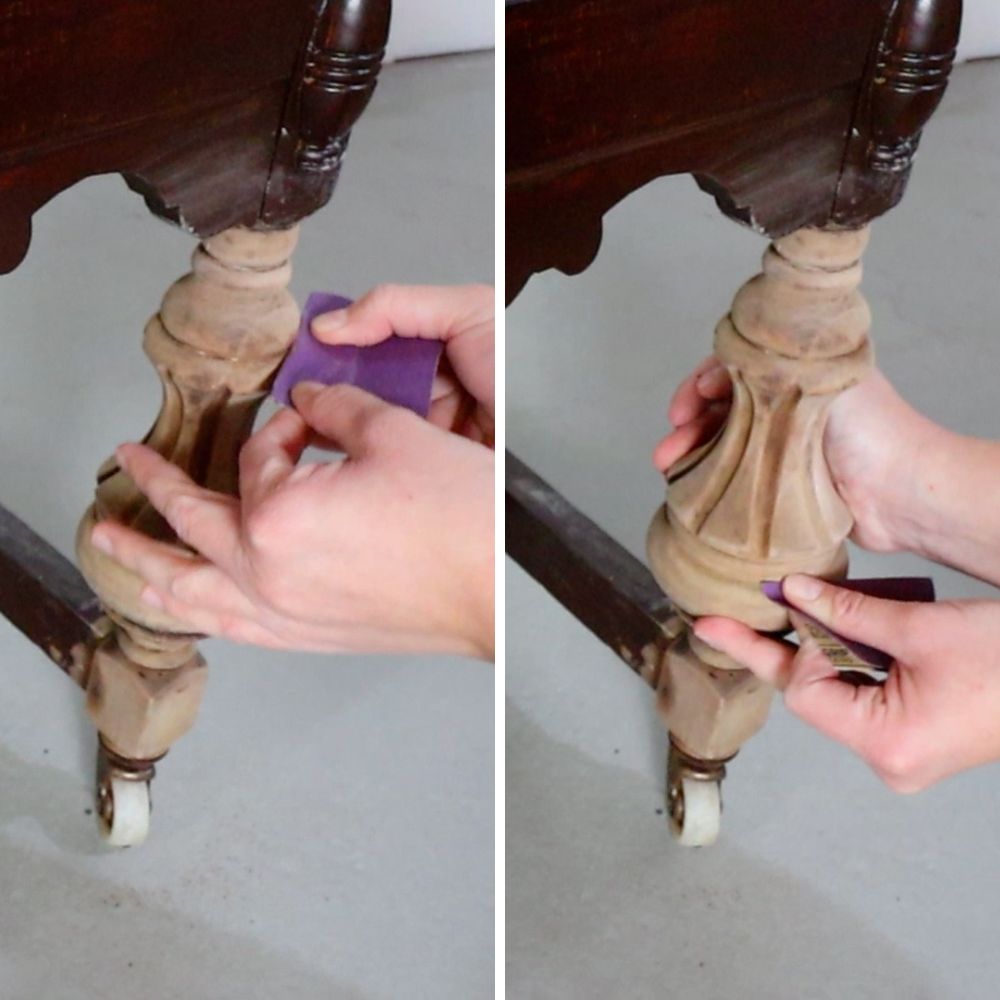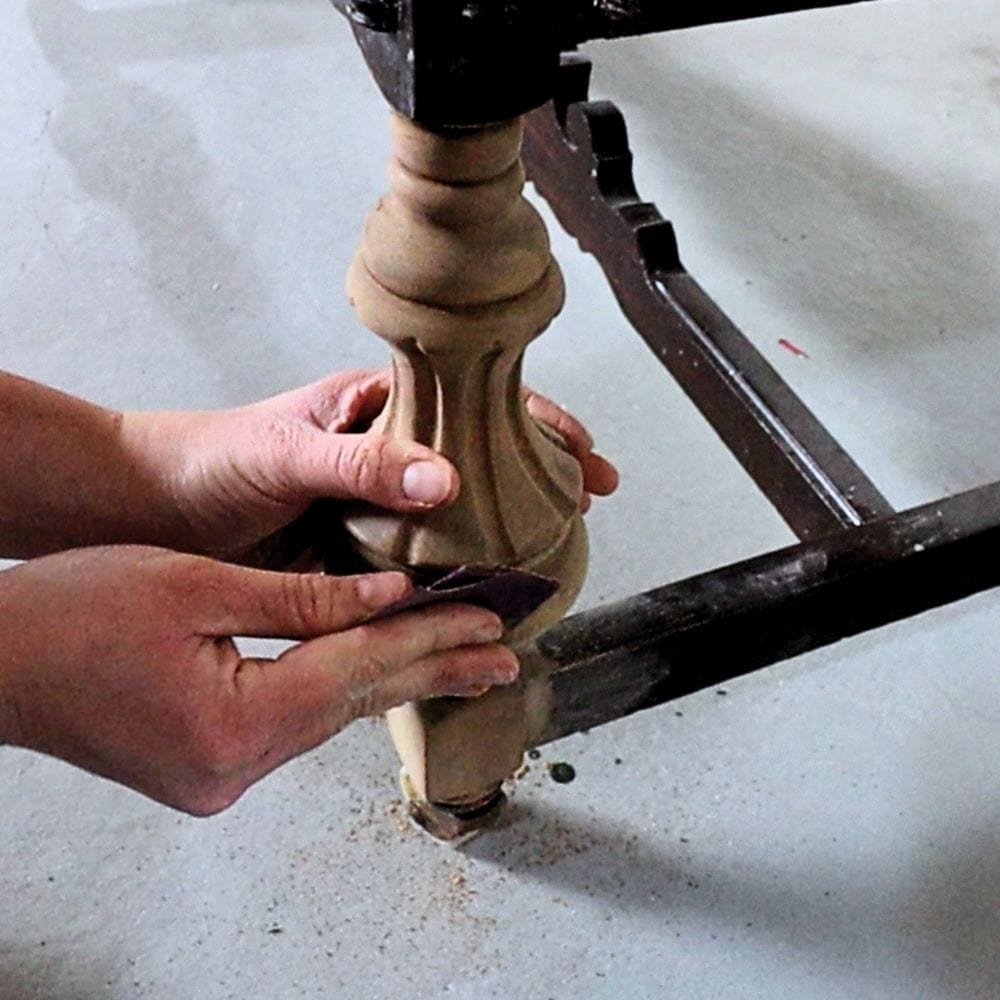Easy Way to Sand Spindles
Some furniture pieces have spindles that are difficult to sand and can be frustrating for DIY-ers. Sanding furniture is an important step in any DIY project, but you may want to skip it because of these pesky spindles. Don’t give up just yet! You can definitely find an easy way to sand spindles in this very guide!
We will go through some tips and tricks that will make the process of sanding spindles a breeze. Keep reading to find out how!

Spindles are a common feature on many furniture pieces, from chairs to bed frames and everything in between.
These thin, cylindrical rods can add a touch of elegance and charm to any piece, but they can also be a headache when it comes to sanding.
One of the biggest challenges with sanding spindles is their shape and size, as they can be difficult to reach with traditional sanding tools and methods.
This can lead to uneven sanding if not done right, resulting in a less than perfect finish. But you can easily tackle those spindles with these ways!
How to Sand Spindles
Yes, there are many easy ways to sand spindles, and these will help you get done with the sanding process quickly and efficiently.
Whether you have a large furniture piece with multiple spindles or just a few on a small project, these methods will work for you.
As an Amazon Associate, I earn from qualifying purchases. I also may earn from other qualifying purchases with other companies or get free product to review and use. All opinions are my own.
Use Sander with Surfprep Foam Pads
If you’re sanding with a sander, the Surfprep foam pads are a must-have. These foam sanding pads for electric sanders make sanding spindles so much easier and more efficient.

You can scuff sand your spindles to prepare furniture for paint or sand off the old finish to restain them. However, keep in mind that this method may not work well for tight crevices or very small spaces.
But if you have the SurfPrep Electric Ray 3×4 Sander, its small profile can help to reach between spindles and sand those hard-to-reach areas.
You can learn all about the SurfPrep Sander here if you’re considering investing in one.
Use Sandpaper with Long Duct Tape Strips
You can get creative by using sandpaper with long duct tape strips to easily sand spindles.
Use long strips of duct tape on the back of coarse sandpaper (from 80–100 grit) that extend past the sandpaper on both sides by about 6-10 inches.
This will act as handles on each side of the sandpaper, making it easy to move back and forth in a sawing motion when sanding spindles.
The duct tape also makes the sandpaper stronger, making sure that it stays in place while you focus on sanding your spindles.
Plus, it’s a thin option that allows you to get into the small spaces between spindles without any hassle.
Use Ultra Flexible Sanding Sheets
This is similar to the previous method. Just take a long ultra-flexible sanding sheet and wrap it around the spindle you’re going to sand.

The benefit of using these ultra flexible sanding sheets is that they can easily conform to the shape of your spindles, so you can sand them more evenly.
They also come in different grits, so you can choose the one that works best for your project.
Just like with the duct tape method, make sure to hold onto the ends of the sanding sheet and use a sawing motion to sand your spindles.
Repeat this process as needed until you get your desired smoothness and finish.
Wrap Sandpaper Around Sanding Contour Grip
Another method is to wrap sandpaper around a sanding contour grip. This allows you to have a better grip on the sandpaper while also reaching into tight crevices and angles.

If you don’t have access to a sanding grip, you can just fold the 3×4 sheet of sandpaper in half and use that to sand the spindles.

The key is to make sure you have a good grip on the sandpaper and can maneuver it effectively between the spindles.
This may take some practice, but with a little patience and persistence, you’ll be able to do it! Remember to use your other hand to hold onto the furniture piece for stability while sanding.
Use Abrasive Cord
For more intricate and detailed spindles, you can use an abrasive cord to get into those tight grooves.
Other sanding tools may not fit in these spaces, so an abrasive cord is a great option. When choosing an abrasive cord, go for a rougher grit for more effective sanding.
To use it, you just simply wrap the cord around the spindle and pull it back and forth to sand away any finish or imperfections. With its flexibility, the abrasive cord can also easily conform to the shape of your spindles.
One benefit of using an abrasive cord is that you can also use it on other intricate details, not just spindles.
You can use it to sand in tight corners and hard-to-reach crevices on any type of furniture piece. This makes it a versatile tool to have in your DIY arsenal!
How often should I change the sandpaper when sanding spindles?
For sanding spindles, you might want to change the sandpaper more often than when sanding larger, flatter surfaces.
This is because spindles can be more intricate and have more curves and angles, which can wear down the sandpaper faster.

It’s recommended to check your sandpaper every few minutes while sanding spindles and switch it out if it starts to feel dull or less effective. Check and change as needed for the best results.
Can I leave spindles unsanded?
It is possible to leave spindles unsanded if you’re fine with their current finish and look. However, leaving them unsanded can result in a rough or uneven surface, which may not be aesthetically pleasing.
Moreover, leaving spindles unsanded can also lead to discoloration and unevenness in the final product.
So while it is ultimately up to personal preference, it is generally recommended to sand spindles. Plus, with the above easy methods for sanding, it won’t take much time or effort!
Whether you choose to use a sander with foam pads, duct tape, sandpaper, ultra-flexible sanding sheets, a sanding contour grip, or an abrasive cord, the key is to find a method that works best for your project.
Remember to check and change your sandpaper frequently for the best results, and don’t be afraid to try out these different techniques to sand your spindles to perfection.
More Sanding Furniture Tips
Follow us on YouTube to get more tips for painting furniture.
Or share your project with us on our Facebook Group and be part of our community. See you there!
